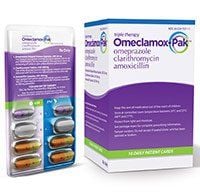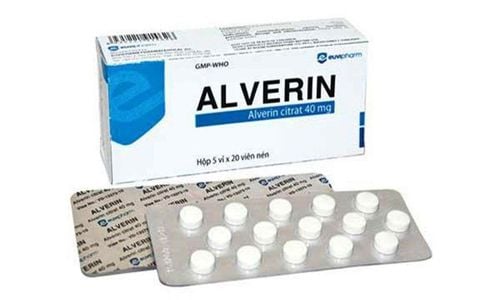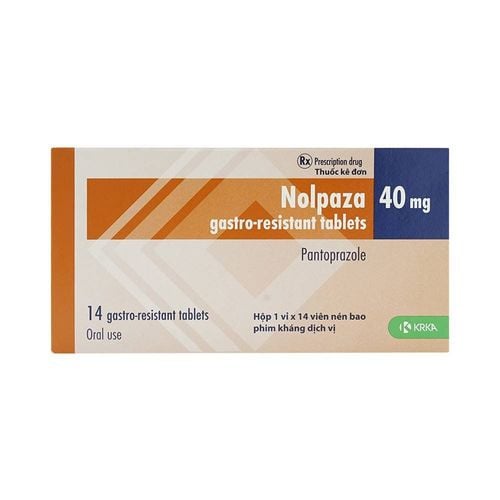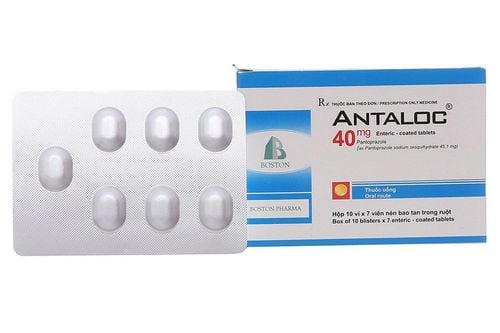This is an automatically translated article.
Sagarab is indicated in the treatment of gastritis, reflux esophagitis, Zollinger - Ellison syndrome... Let's learn about the uses, the notes when using Sagarab through the article below.
1. Uses of the drug Sagarab
“What does Sagarab do?”. Sagarab medicine contains the active ingredient Rabeprazol Sodium 20mg in the form of enteric-coated film-coated tablets.
Sagarab is indicated in the following cases:
Gastric ulcer; duodenal ulcer; Reflux esophagitis; Zollinger-Ellison syndrome.
2. The mechanism of action of the drug Sagarab
Active ingredient Rabeprazole belongs to the group of proton inhibitors H + / K + ATPase acting according to the following mechanism:
Inhibiting gastric acid secretion stimulated by Dibutyl Cyclic AMP in the gastric gland; Strong inhibition of gastric acid secretion stimulated by histamine or Pentagastrin in animal studies; Animal studies have shown that rabeprazole has anti-ulcer effects on many ulcers, improving gastric mucosal lesions.
3. Dosage of Sagarab
The recommended dosage of Sagarab is as follows:
Adults: Take 10mg/day, the dose can be increased to 20mg/day depending on the severity of the disease' The recommended duration of treatment with Sagarab is 4 - 8 weeks in patients with duodenal ulcer, 6-12 weeks in patients with gastric ulcer and reflux esophagitis. Patients should note that the dosages listed above are for reference only. Sagarab belongs to the group of prescription drugs, so the dose used should be prescribed by the doctor based on the medical condition.
Sagarab should be taken in the morning 30 minutes before meals.
4. Side effects of the drug Sagarab
Sagarab can cause some side effects as follows:
Urticaria; Red rash on the skin; Hematologic changes; Affects liver function; Diarrhea, feeling of bloating; Heaviness in the stomach, headache. Patients should inform their doctor if they experience any unwanted effects during treatment with Sagarab.
5. Notes when using Sagarab
Contraindicated to use Sagarab in patients with hypersensitivity to Rabeprazole or any of its ingredients.
During treatment with Sagarab, some issues should be noted as follows:
The dose of Sagarab should be reduced in patients with liver failure depending on the disease status; Patients should stop taking the drug and notify their doctor if they experience symptoms or signs of an autoimmune disease; The risk of respiratory infections and infections of Campylobacter, Salmonella is increased with the use of Rabprazol; Pathological symptoms of hyperacidity may mask the underlying malignancy; An increased risk of osteoporosis and fractures is associated with prolonged treatment with rabeprazole. The cause is explained by decreased absorption of calcium in the gastrointestinal tract due to decreased gastric acid secretion; Reduced absorption of Calcium, Iron, Magnesium, Vitamin B12; Hypomagnesemia is rare but can cause serious consequences, supplementing blood magnesium during treatment with PPI inhibitors does not bring high efficiency. At this point, the patient needs to stop using PPI inhibitors; Use in Pregnancy: There are no data or studies showing an adverse effect of rabeprazole in pregnant animals. However, to ensure the safety of the use of Sagarab in pregnant women should be prescribed and monitored by a doctor; For women who are breast-feeding: To ensure safety, patients should stop using the drug while breast-feeding or do not breast-feed while taking the drug.
6. Drug interactions
Drug interactions contraindicated concurrent use: Nelfinavir, Erlotinib, Rilpivirine. The reason is that Rabeprazole increases gastric pH, reduces the solubility of the above drugs, thereby reducing bioavailability and reducing the effectiveness of treatment.
Serious drug interactions requiring alternative medicine are as follows:
Indinavir, Acalabrutinib, Dacomitinib, Atazanavir, Neratinib, Delavirdine, Ketoconazole, Itraconazole, Pazopanib, Mesalamine, Sofosbuvir/Velpatasvir, Pexidartinib: Rabeprazol reduces the bioavailability of the above drugs; Digoxin: Rabeprazole inhibits acid secretion, increases the bioavailability of Digoxin, thereby increasing the risk of Digoxin toxicity; Nisoldipine: Rabeprazole increases the bioavailability of Nisoldipine; Methotrexate: Rabeprazole increases the plasma concentration of Methotrexate, thereby increasing the toxicity and side effects of the drug. Other Drug Interactions:
Inducers of CYP3A4 and CYP2C19 increase the metabolism of Rabeprazole but not significantly because Rabeprazole is metabolized mainly by non-enzymatic pathways; Inhibitors of CYP3A4 and CYP2C19 have a slight effect on the metabolism of rabeprazole. Drug interactions occur that increase the risk of having effects and reduce the therapeutic effect of Sagarab, so to ensure safety and effectiveness in treating patients, it is necessary to inform the doctor about the drugs and foods that are being used. used before taking Sagarab.
Follow Vinmec International General Hospital website to get more health, nutrition and beauty information to protect the health of yourself and your loved ones in your family.













